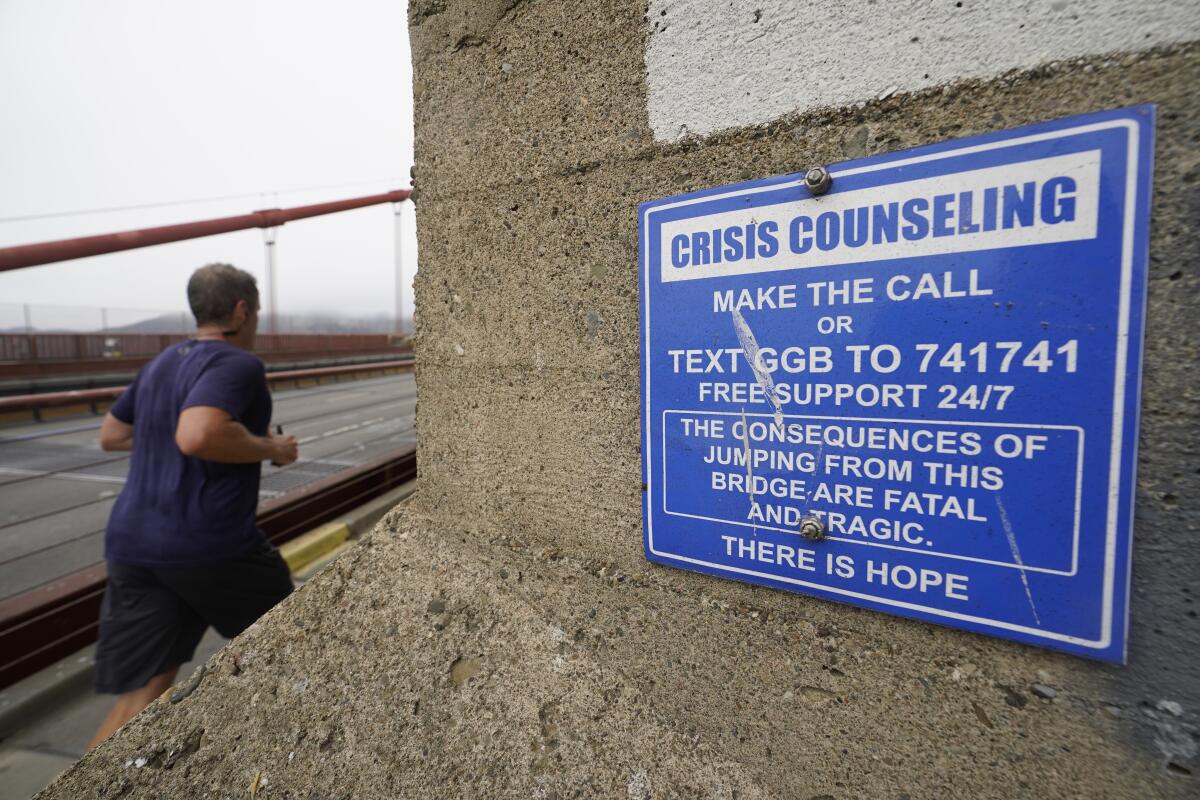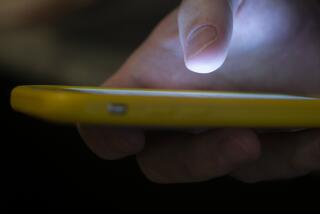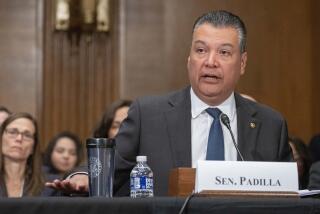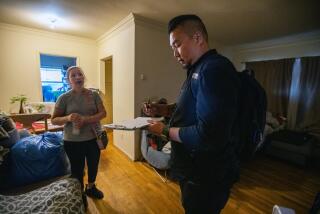Op-Ed: Will the new 988 hotline be a game changer for mental health or a missed opportunity?

Today, the 911 system is taken for granted. Anyone, virtually anywhere in the United States, should be able to dial three digits during a physical health emergency and expect a fast, local response â sometimes making the difference between life and death.
On July 16, â988â will become the equivalent hotline for mental health emergencies. The launch will occur two years after Congress passed the National Suicide Designation Act of 2020, leaving the particulars of implementation to individual states. But the change will be a missed opportunity if states canât clear significant hurdles: funding the expanded crisis response system, and making sure people know itâs available.
Thereâs a clear need for a hotline tailored to mental health emergencies. Someone dies from suicide in the United States about every 11 minutes, a rate that has increased almost 30% since 2000, according to government statistics. (Suicide is the second-leading cause of death among adolescents and young adults, according to 2019 data.) Another roughly 10 million Americans show up at emergency departments each year with acute mental health needs.
As a gay Latino, I encountered limited and lacking treatment options.
While the National Suicide Prevention Lifeline has served as a resource for those in mental health crisis for more than 15 years, people have to remember a 10-digit number to call it. The three-digit makeover is likely to draw more callers. If it can handle the influx, 988 could divert individuals to services that are more appropriate than emergency rooms or law enforcement agencies. Arizonaâs crisis response approach has so far shown promise.
Yet this vision for 988 response remains a distant goal in most U.S. communities. A national survey we conducted at Rand Corp. this spring found that many state and county program directors feel unprepared for the 988 rollout. A majority reported they didnât feel they had the staffing, financing or infrastructure needed. Most had not been involved in developing a strategic plan or budget for setting up a 988 system.
The federal law gave states the option of funding 988 through a monthly fee on phone bills, but just a handful have passed legislation to do so. Californiaâs bill to levy a capped phone surcharge to finance 988 is waiting in the state Legislature, and the funding the state has pledged to the program so far falls short of the $50 million advocates say is needed for an expected tripling of call volume.
The funding shortages should not come as a shock. The lack of mental health infrastructure and providers in the U.S. has for decades contributed to high rates of homelessness and incarceration among individuals with mental health conditions, as well as rising deaths from suicide, drug overdose and alcohol poisoning. Without rapid reforms to support mental health care in general and 988 in particular, dialing the new line in many parts of the country would force callers to endure long wait times, connect them to someone unfamiliar with nearby services or direct them to overwhelmed hospitals that canât admit new psychiatric patients.
The federal government is increasing its investments to address the lack of services. Congress allocated billions of dollars for mental health through the CARES Act and American Rescue Plan. The Biden administrationâs 2022 budget included $1.6 billion in block grants for community mental health services. But the need for options such as mental health urgent care centers and community-based residential treatment, as well as employment support, remains enormous.
Long-term funding for 988 will also be crucial to ensure that people actually get access to care. Last year, the current 10-digit suicide hotline fielded about 2 million calls, but an estimated 17% were abandoned before the caller got help.
Another challenge lies in educating the public about 988 and destigmatizing its use. Schools represent a powerful potential avenue for this. At least 20 states and Washington, D.C., include mental health in their curricula. Normalizing use of 988 among students would introduce young people to a service they or their loved ones may continue to need in adulthood. Public campaigns can also spread information about mental health programs widely; the Why We Rise campaign in Los Angeles, for example, has reached diverse racial and ethnic groups.
With mental health program directors around the country saying they donât have the money, staff or plans in place, the most important factor in 988âs success will be how government officials and health system administrators respond. The pandemic has heightened awareness of the urgency of mental health care, particularly among parents whose kids have suffered during the pandemic. Given the magnitude of the mental health crisis, 988 should be an opportunity to overhaul not just the phone number but also what happens after it gets dialed. It will take political will and leadership to reach that goal.
Ryan K. McBain is a health economist at the nonprofit, nonpartisan Rand Corp., where Stephanie Brooks Holliday is a behavioral scientist.
More to Read
A cure for the common opinion
Get thought-provoking perspectives with our weekly newsletter.
You may occasionally receive promotional content from the Los Angeles Times.












